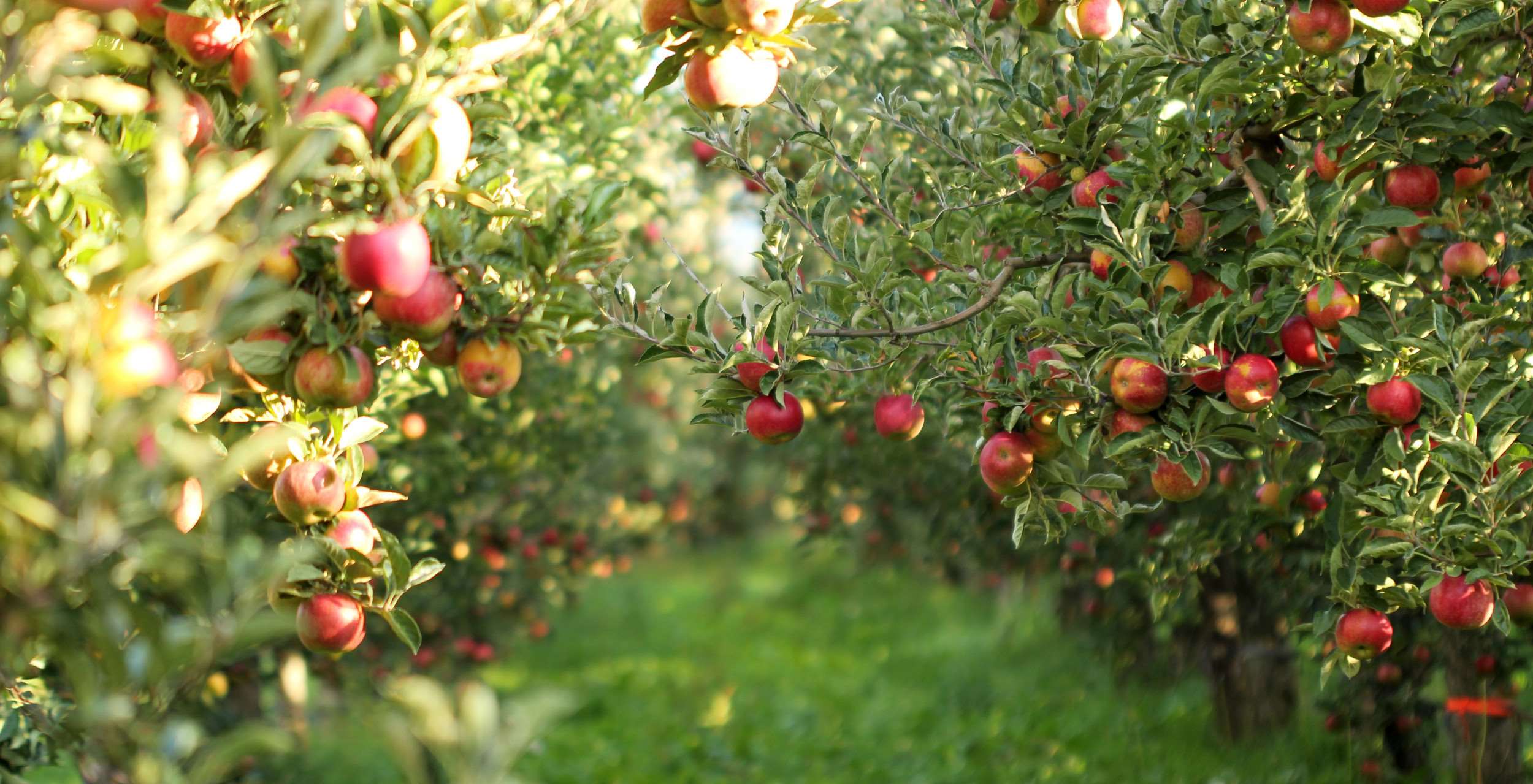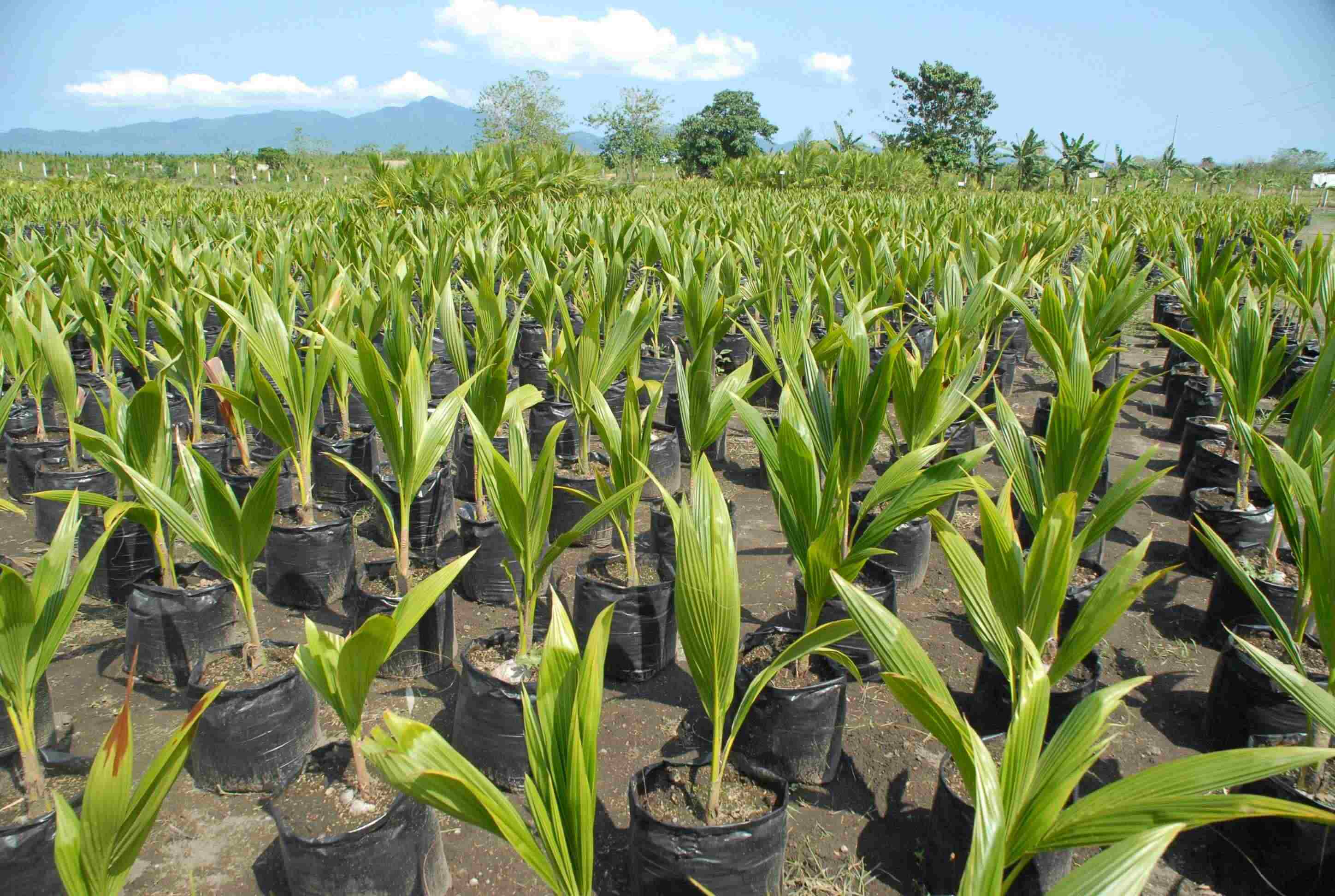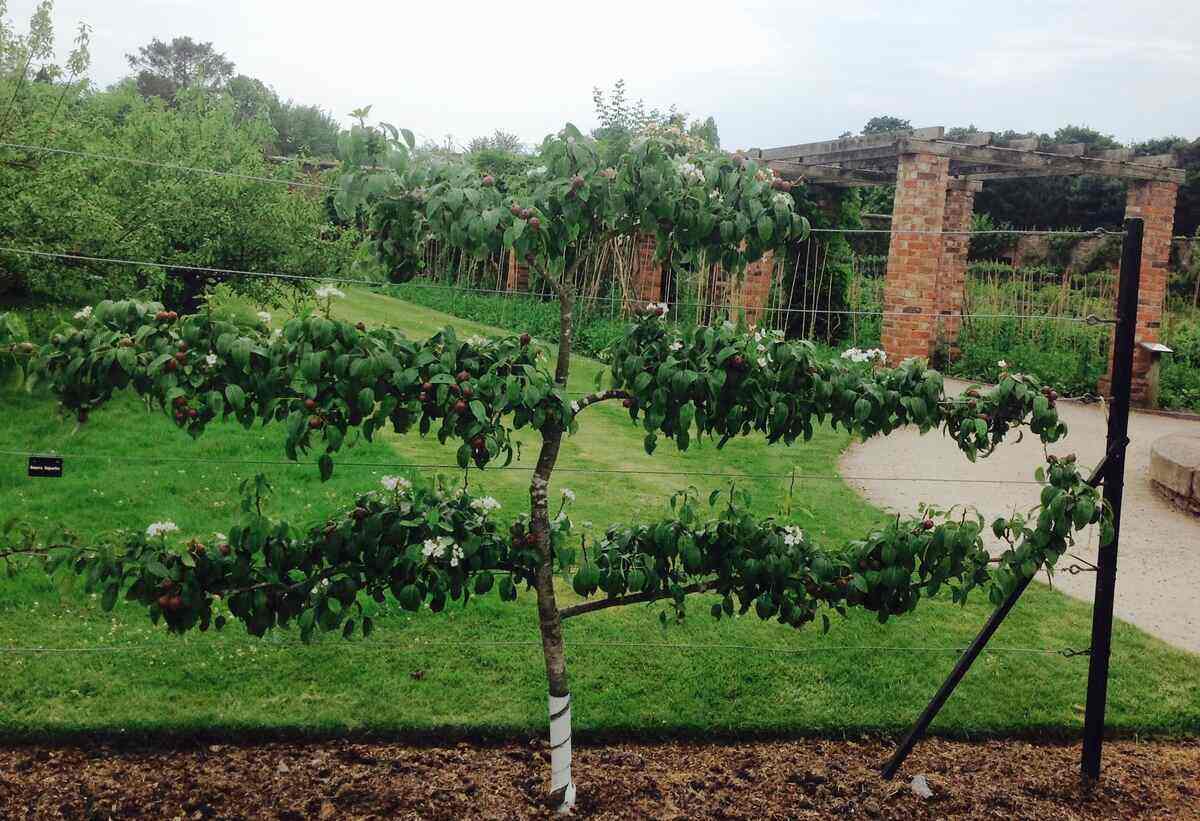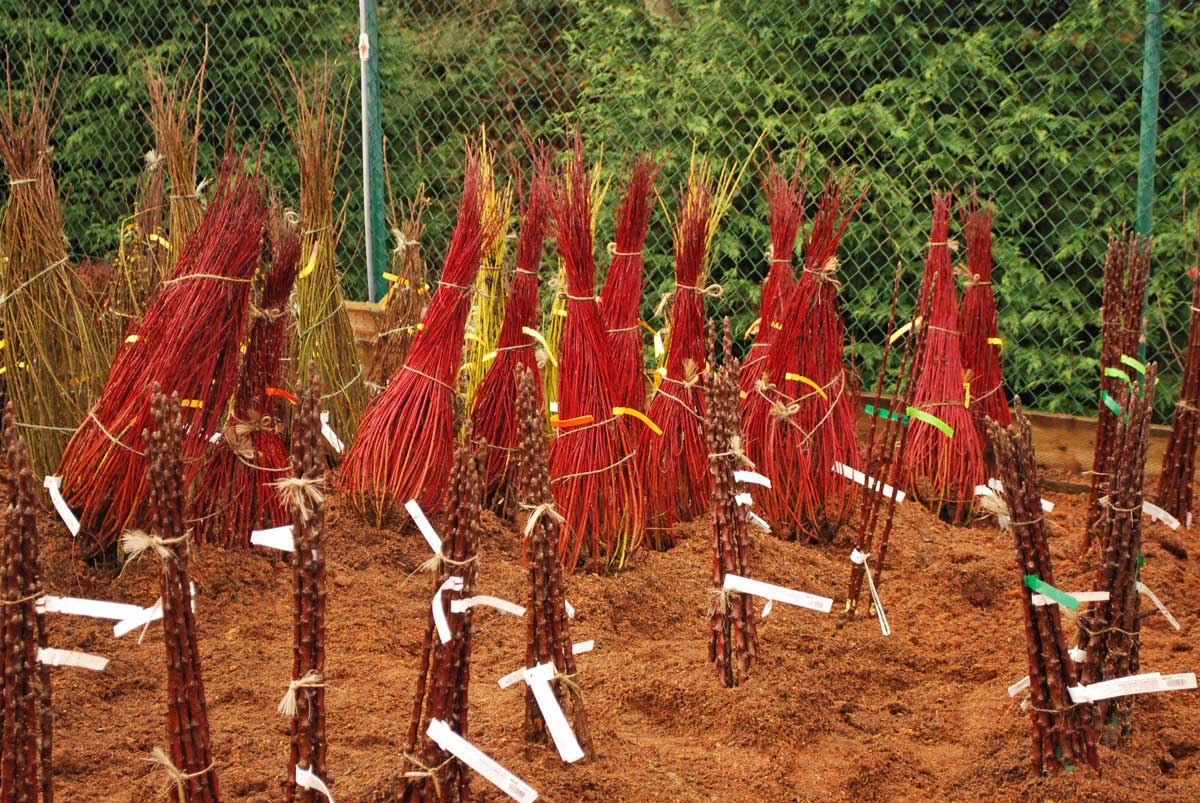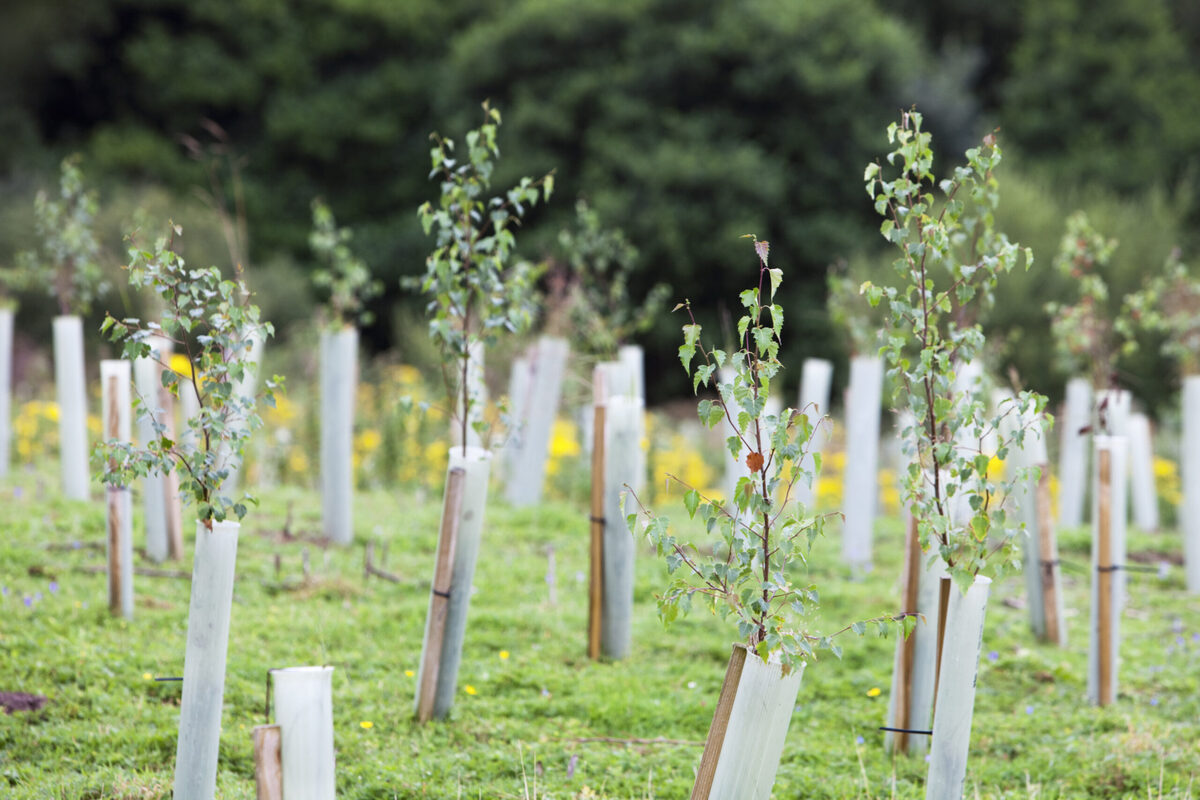Home>Types of Gardening>Edible Gardening>When To Plant Fruit Trees


Edible Gardening
When To Plant Fruit Trees
Modified: February 7, 2024
Discover the best time to plant fruit trees for your edible gardening. Learn expert tips and techniques to ensure a successful harvest.
(Many of the links in this article redirect to a specific reviewed product. Your purchase of these products through affiliate links helps to generate commission for Chicagolandgardening.com, at no extra cost. Learn more)
Table of Contents
Introduction
Growing your own fruit trees is not only a rewarding experience, but it also allows you to enjoy the freshest, most flavorful fruits right from your own backyard. However, to ensure the success of your fruit trees, proper planting and timing are crucial factors to consider. Planting fruit trees at the right time can significantly impact their growth, health, and productivity.
When deciding on the best time to plant fruit trees, there are several factors to consider, such as the climate and geographical location, the specific type of fruit tree, and the soil conditions. By understanding these considerations and choosing the optimal planting time, you can give your fruit trees the best possible start and set them up for long-term success.
In this article, we will explore the ideal timing for planting fruit trees and discuss the benefits of both spring and fall planting. We will also cover other important considerations to keep in mind when planning your edible garden. Whether you’re a seasoned gardener or a novice enthusiast, read on to discover the secrets of successfully establishing fruit trees and reaping the rewards of a bountiful harvest.
Factors to Consider Before Planting Fruit Trees
Before diving into the planting process, it’s important to evaluate several key factors that can influence the success of your fruit trees. Taking these factors into consideration will help you make informed decisions and ensure the optimal growth and productivity of your trees.
Climate and Geographic Location: Fruit trees have specific climate requirements to thrive. Some fruit trees, such as apples and pears, prefer cooler climates, while others, like citrus trees, thrive in warmer regions. Understanding the climate and hardiness zone of your area is essential in selecting the right fruit tree varieties for your location.
Soil Conditions: Fruit trees require well-draining soil to prevent waterlogging and root rot. Before planting, assess the soil’s texture, pH levels, and fertility. Sandy or loamy soil is ideal, while heavy clay soil should be amended to improve drainage. Conducting a soil test can provide valuable insights into the soil’s nutrient composition, allowing you to make necessary amendments.
Sunlight Exposure: Fruit trees require at least six hours of direct sunlight each day to thrive and produce a bountiful harvest. Before planting, carefully evaluate the sunlight exposure in your chosen planting spot. Avoid planting near large trees or structures that may cast shadows and limit sunlight penetration.
Space and Tree Size: Different fruit tree varieties have varying space and height requirements. Consider the available space in your garden before choosing a tree. Ensure that there is ample room for the tree to spread its branches without crowding other plants or structures. Additionally, be aware of the mature size of the tree and its compatibility with your gardening goals and available space.
Pollination Needs: Some fruit tree varieties require cross-pollination with another compatible variety to bear fruit. This means you will need to plant at least two different varieties that bloom at the same time or within the same pollination group. However, some fruit trees are self-pollinating and can produce fruit without the need for another tree.
Considering these factors before planting your fruit trees will set a strong foundation for their growth and ensure a successful, thriving orchard. Next, let’s explore the ideal timing for planting fruit trees and the benefits of both spring and fall planting.
Ideal Timing for Planting Fruit Trees
Choosing the right time to plant your fruit trees is crucial for their establishment and long-term growth. While the specific timing can vary depending on your location and climate, there are generally two ideal seasons for planting fruit trees: spring and fall.
Spring Planting: Spring is an optimal time to plant fruit trees for several reasons. As the temperatures start to warm up, the soil becomes more workable, allowing for easier planting. Additionally, the mild weather and increased sunlight in the spring provide ideal conditions for the tree to establish its root system and develop strong, healthy growth.
To determine the best time for spring planting, consider the last frost date in your region. It’s crucial to plant the trees after the danger of frost has passed, as frost can damage the tender buds and young shoots. In general, planting fruit trees in early to mid-spring, when the soil has thawed and the risk of frost has diminished, is recommended.
Fall Planting: Fall is another favorable season for planting fruit trees. As the temperatures start to cool down after the heat of summer, planting in the fall allows the tree’s root system to establish itself before the dormant winter period. The cool and moist conditions of fall provide an ideal environment for root development and reduce the stress on the newly planted tree.
Similar to spring planting, it’s important to consider the timing in relation to the first frost date in your region. Planting your fruit trees about six to eight weeks before the first frost will give the roots enough time to establish before the onset of winter dormancy. This timing allows the tree to focus on root development rather than foliage growth, leading to a stronger and healthier tree in the long run.
It’s worth noting that while spring and fall are the ideal seasons for planting fruit trees, it’s possible to plant them during other times of the year, depending on your climate and the specific tree variety. However, planting during extreme weather conditions, such as the intense heat of summer or the freezing temperatures of winter, should be avoided as it can stress the tree and hinder its establishment.
By selecting the appropriate time to plant your fruit trees and considering your specific climate and region, you’ll provide them with the best opportunity to flourish and bear abundant fruit. In the next section, we’ll discuss additional considerations you should keep in mind when planting fruit trees.
Spring Planting
Spring is an optimal season for planting fruit trees due to the favorable weather conditions and the tree’s natural growth cycle. When planting fruit trees in the spring, it’s important to consider a few key factors to maximize their chances of success.
Soil Preparation: Before planting, prepare the soil by removing any weeds or grass in the planting area. Loosen the soil to a depth of about 12 inches, breaking up any clumps and removing rocks or debris. Amending the soil with organic matter, such as compost or aged manure, can improve its fertility and drainage, providing a healthy environment for root development.
Variety Selection: Choose fruit tree varieties that are well-suited to your climate and the amount of sunlight available in your garden. Consider the specific requirements of each variety, including chilling hours, disease resistance, and pollination needs. Selecting the right tree for your location is key to ensuring its long-term health and productivity.
Planting Technique: When planting the tree, dig a hole that is wider and deeper than the root ball or container. Gently remove the tree from its container, or if it’s bare-root, soak the roots in water for a few hours before planting. Place the tree in the hole, making sure the bud union (if present) is above the soil line. Fill the hole with soil, firming it gently around the roots, and water thoroughly to settle the soil.
Watering and Mulching: Regular watering is essential for the tree’s establishment and early growth. Water deeply immediately after planting and continue to water on a regular basis throughout the spring and summer months. Applying a layer of organic mulch around the base of the tree helps retain moisture, suppress weeds, and regulate soil temperature.
Pruning and Training: In the first few years after planting, it’s important to prune and train your fruit tree. Remove any damaged or crossing branches and maintain a central leader or desired shape. Pruning helps promote a strong framework and allows for better airflow and sunlight penetration, reducing the risk of disease and promoting fruit production.
By following these guidelines and ensuring proper care and attention, your fruit trees planted in the spring will have the best chance to establish a strong root system and flourish in the coming years. In the next section, we will explore the benefits of fall planting for fruit trees.
Fall Planting
Fall is an ideal season for planting fruit trees, offering several advantages over other times of the year. When planting fruit trees in the fall, there are a few important considerations to keep in mind to ensure their successful establishment and long-term growth.
Timing: Choose the right timing for fall planting by considering the first frost date in your region. Plant your fruit trees about six to eight weeks before the arrival of the first frost. This timeframe allows the roots to establish before winter dormancy sets in. The cooler temperatures and moist soil of fall create optimal conditions for root development and minimize stress on the tree.
Soil Preparation: Like spring planting, preparing the soil is crucial for fall planting success. Remove any weeds or grass from the planting area and loosen the soil to ensure good drainage. Incorporate organic matter into the soil to improve its structure, fertility, and moisture retention capabilities. This will provide an ideal environment for the tree’s roots to grow and establish themselves.
Variety Selection: Choose fruit tree varieties that are suitable for your climate and the amount of sunlight available during the fall season. Consider varieties that have a shorter maturation period to ensure sufficient time for fruit development before the arrival of colder weather. Additionally, select varieties that are known for their winter hardiness to withstand the harsh conditions of winter.
Planting Technique: When planting in the fall, follow the same planting technique as in other seasons. Dig a hole that is wider and deeper than the root ball, gently remove the tree from its container, and place it in the hole. Ensure the bud union (if present) is above the soil line, and backfill the hole with soil, firming it gently around the roots. Water thoroughly to settle the soil and remove any air pockets.
Watering and Mulching: Adequate watering is essential during the fall planting season. Water the newly planted tree deeply to ensure proper hydration. As winter approaches, continue to monitor soil moisture levels and water as needed, especially during dry periods. Apply a layer of organic mulch around the base of the tree to retain moisture, regulate soil temperature, and protect against weeds.
Protection from Frost: Consider implementing frost protection measures to safeguard your newly planted fruit trees. Use frost blankets or covers to shield the trees from sudden temperature drops and frost events. This can prevent damage to the foliage and buds, ensuring a healthy start for your trees in the following spring.
By planting fruit trees in the fall, you provide them with ample time to develop strong root systems before the arrival of more challenging weather conditions. The cooler temperatures and moist soil of autumn contribute to their successful establishment and enhance their chances of thriving in the years to come. In the next section, we will explore other important considerations for planting fruit trees.
Other Considerations for Planting Fruit Trees
Aside from timing and planting techniques, there are several other important factors to consider when planting fruit trees. Paying attention to these considerations will help ensure the health, productivity, and longevity of your trees.
Watering: Proper watering is crucial throughout the life of your fruit trees. Newly planted trees need regular watering to establish their root systems. Keep the soil consistently moist, but avoid overwatering, as it can lead to waterlogged roots. As the tree matures, adjust the watering schedule to meet its specific needs, accounting for weather conditions and soil moisture levels.
Fertilization: Fruit trees benefit from regular fertilization to ensure adequate nutrient levels for growth and fruit production. Before planting, incorporate organic matter into the soil as a source of nutrients. Once the tree is established, apply a balanced fertilizer annually, following the recommended dosage and timing for your specific fruit tree variety.
Pruning and Training: Pruning and training your fruit trees play a vital role in their overall health and productivity. Regular pruning helps maintain the size and shape of the tree, promotes proper airflow and sunlight penetration, and removes diseased or damaged branches. It is important to learn the proper techniques for pruning fruit trees or consult a professional to ensure you’re pruning correctly.
Pest and Disease Management: Fruit trees can be susceptible to various pests and diseases. Regular monitoring and proactive management are essential to prevent or address any issues that may arise. Implement integrated pest management (IPM) practices, such as using organic sprays, attracting beneficial insects, and practicing good sanitation in the orchard.
Pollination: Understanding the pollination requirements of your fruit trees is crucial for successful fruit production. Some fruit tree varieties are self-pollinating and can produce fruit without the need for cross-pollination. However, others require cross-pollination with another compatible variety. Ensure you have the appropriate pollinator trees nearby, either within your own garden or in the surrounding area, to ensure proper pollination.
Winter Protection: In regions with cold winters, it’s important to provide winter protection for your fruit trees. Apply a layer of mulch around the base of the tree to insulate the roots against extreme cold and temperature fluctuations. Consider using tree wraps, burlap, or other protective coverings to shield the trunk and lower branches from harsh winter conditions.
Regular Maintenance: Ongoing care and maintenance are vital for the health and longevity of your fruit trees. Regularly inspect your trees for any signs of disease or damage. Prune as needed to maintain structure and remove any dead or diseased material. Stay vigilant for pests and take appropriate action if an infestation occurs.
By considering these various aspects of fruit tree care, you can create a nurturing environment for your trees to thrive and produce a bountiful harvest. With proper attention and ongoing maintenance, your fruit trees will provide you with years of enjoyment and delicious fruits.
Conclusion
Growing fruit trees in your garden can be a fulfilling and rewarding experience. By considering factors such as climate, soil conditions, sunlight exposure, and spacing requirements, you can select the right fruit tree varieties for your location. Planting fruit trees at the ideal time is crucial for their successful establishment and long-term growth.
Spring and fall are the optimal seasons for planting fruit trees. Spring planting takes advantage of favorable weather conditions and allows the tree to establish its root system during the growing season. Fall planting benefits from cooler temperatures, which promote root development before winter dormancy.
Proper techniques, such as soil preparation, watering, mulching, and pruning, are essential for the health and productivity of your fruit trees. Ongoing care, including fertilization, pest and disease management, and regular maintenance, will ensure your trees stay vigorous and produce abundant fruit.
Remember to select fruit tree varieties that are well-suited to your climate, provide adequate pollination, and consider implementing winter protection measures in colder regions.
By following these guidelines and considering the specific needs of your fruit trees, you can create a thriving orchard and enjoy the delights of homegrown fruits. So, roll up your sleeves, get your hands dirty, and embark on your edible gardening journey. With patience, knowledge, and a little TLC, your fruit trees will flourish and provide you with a delicious harvest for years to come.
